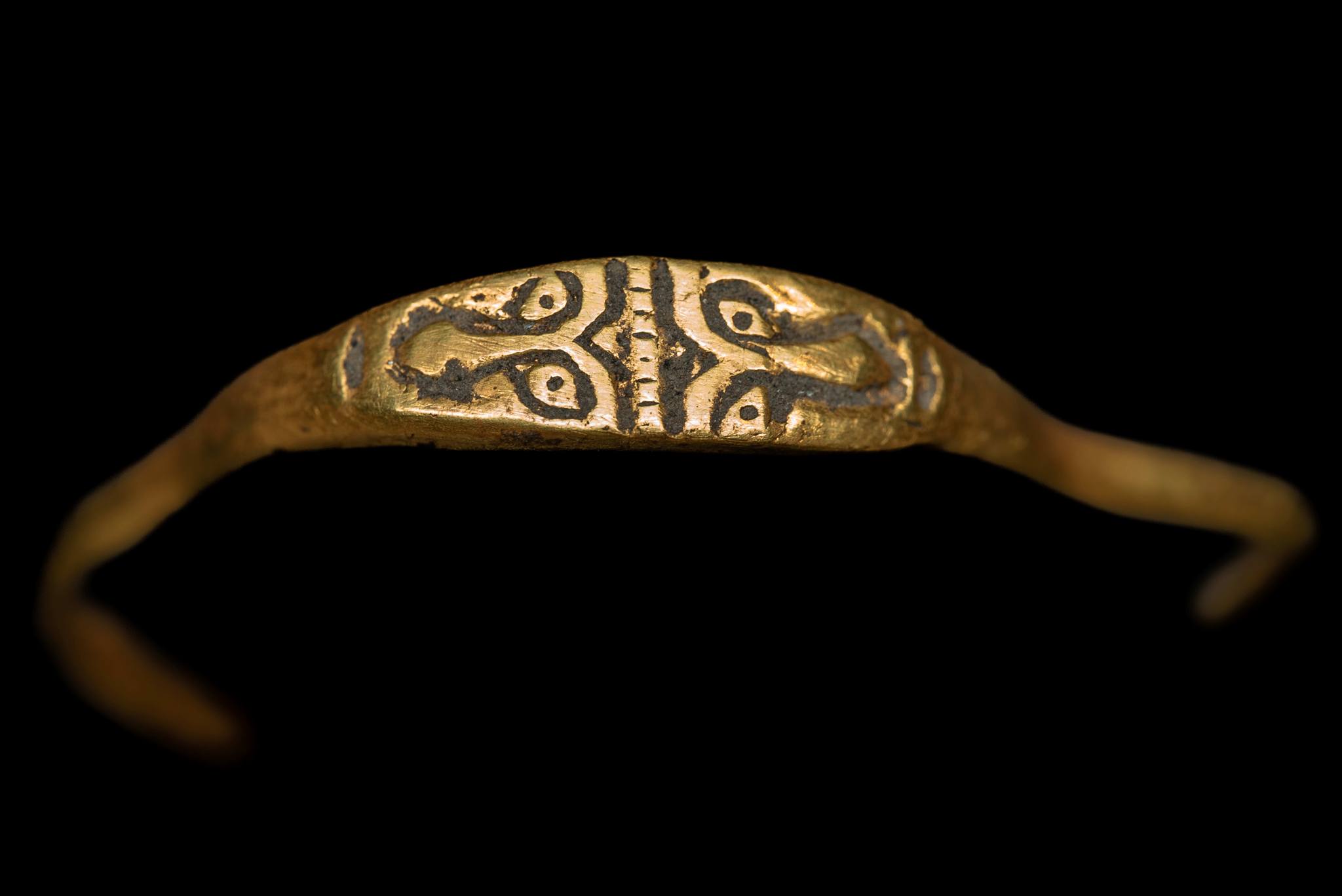Taky ho mohli odbahnit. Ale je pěknej
Under the 14th century castle tower, they discovered a 900-year-old gold ring that is unparalleled
Categories: Nálezy nejenom s detektorem kovů ve východní Evropě
An extremely rare find was discovered at the Wawel Royal Castle in Kraków in the form of an early medieval gold ring from the 11th century with two opposing faces. Only a few gold rings from this period have been found in Poland so far, and the "Wawel ring" is the first ever with an anthropomorphic depiction.
The unique ring was discovered during ongoing archaeological research in the basement of the residential part of the 14th century Danish Tower. However, it was lying in an archaeological layer on top of the remains of an apparently older defensive wall. The ring is 1.5 mm thick, 4 mm in diameter and 57 mm in circumference, with the top flattened to form a decorative shield and the wire broken at the bottom. The anthropomorphic ornament depicts two faces. It is the first Polish example of an early medieval ring decorated with figural representations. The shape and style of the ring suggest that it was made in Poland, perhaps for an elite courtier of the Piast dynasty.
Only a few examples of early medieval gold rings are known from all of Poland, the vast majority without decoration or with only simple geometric designs. The specimen from Wawel is unique not only in its decoration, but also in not referring, contrary to custom, to Christianity. The opposing faces may refer to Roman mythology, in which Janus appears - the god of two faces - duality, war and peace, the end and the beginning...
Wawel - as the oldest royal residence, was built by Mieszko I (c. 960 - 992), the first Polish king who converted to Christianity in 966. After his death, the first cathedral in Poland was built next to the royal castle, where Polish rulers were crowned and buried for centuries. The castle was considerably enlarged and modernised into a Renaissance palace by the Jagiellonians (Alexander I, Sigismund I the Old and Sigismund II Augustus) in the 15th to 16th centuries.
After the royal court moved to Warsaw in 1609, Wawel gradually declined and was finally sacked by Swedish troops. After the partition of Poland at the end of the 18th century, the devastated castle was converted into barracks for Austrian troops. Poland regained it in 1918, when it served as both the seat of the head of state and a museum. The oldest history of the castle hill goes back far before the 10th century.
Roman Nemec
Sources: archaeology.org, notesfrompoland.com





The article is included in categories:
- Archive of articles > Archaeology > Finds and rescue research abroad > Nálezy nejenom s detektorem kovů ve východní Evropě
Post
a jsou to opravdu lidé?? - proč by to mělo ty divoký oči??
- na první pohled šelmy
Medvěde, byly to prostě dost divoký lidi :)
áno, pravda, takže asi to fakt budou lidi, bo zrovna nedávno sem si říkal, po kom su takovej divočák 
- ale jestli totok sou lidský tváře, sežeru dva kočičáky 
luke: Něco jsem se šelem nafotil a napozoroval, ty huby pod nosem lidské budou...
no já Ti nevím, pokud by to byl teda člověk, tak nějaká stylizace, si vem, že třebas na mincích z té doby - denárech, je mnoho vyobrazení člověka a nikdy taková primitivní obluda, vždy to vypadá jako člověk
Z článku asi stěžejní info: Z celého Polska je známo jen několik příkladů raně středověkých zlatých prstenů, drtivá většina bez zdobení nebo jen s jednoduchými geometrickými vzory. Exemplář z Wawelu je unikátní nejen zdobením, ale navíc neodkazuje, proti zvyklostem, na křesťanství. Protilehlé tváře mohou odkazovat na římskou mytologii, ve které se objevuje Janus - bůh dvou tváří - duality, války a míru, konce a počátku
no, ono vlastně pod pojmem "Antropomorfní" si můžeme představoval všelicos.......
Antropomorfní je slovo znamenající podobný člověku. Je užíváno k popisu dobře známého konceptu zvaného antropomorfizmus: připisující lidské rysy a vlastnosti stvoření jinému než lidskému, nebo objektu. Typicky se ho používá ve vztahu k nadpřirozeným bytostem, kterým se obvykle dává lidský tvar. Ale tento termín se může vztahovat k jakémukoliv ne-lidskému objektu včetně zvířat, rostlin a jiných neživých věcí.










